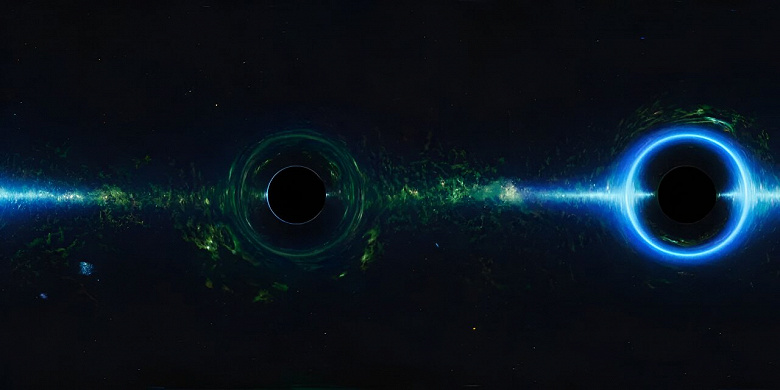Emission from ultra-light black holes provides possible explanations for dark matter
Primordial black holes — these are hypothetical objects that, according to models, arose at the very beginning of the Universe. They have the properties of dark matter and are able to group around galaxies. Although no such black holes have yet been discovered, they could explain most aspects of dark matter.
However, most candidates for primordial black holes have not yet been confirmed by observations. These black holes would be so numerous that they would often pass in front of stars, creating microlensing events. However, several sky surveys have been inconclusive, making the existence of primordial black holes an unlikely idea.
A new scientific paper proposes an alternative approach. He considers ultra-light black holes, which are at the end of possible masses and emit Hawking radiation.
Hawking's evaporation rate is inversely proportional to the size of the black hole, so ultralight black holes should evaporate quickly. However, since there is no complete model of quantum gravity, scientists do not know exactly how the life cycle of these black holes ends.
The author of the work points to three possible outcomes. In the first case, the black hole completely evaporates, creating a short burst of high-energy particles. In the second case, some mechanism prevents complete evaporation, and the black hole reaches a “state of equilibrium.” In the third option, «state of equilibrium» causes the event horizon to disappear, leaving only a singularity. In these last two cases, black holes may have an electrical charge.
An important point is the evaporation time of these black holes. If they were small, then they would quickly evaporate and affect the early Universe. If the evaporation time is long, then we can notice flashes of gamma radiation. However, observations of these effects have not yet been recorded.
The author of the work notes that in the last two options «equilibrium» will be achieved at the Planck scale, and the remnants of black holes will be the size of a proton, but significantly larger mass. However, these residues, if electrically neutral, can be difficult to detect. But if they have a charge, they can be detected using new neutrino detectors.
New work shows that current observations do not exclude the possibility of the existence of primordial black holes. While more precise information is not available, this model complements existing theoretical assumptions.

